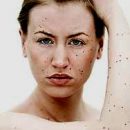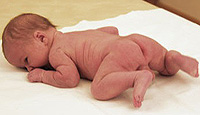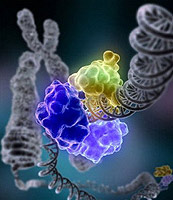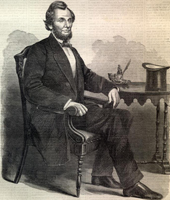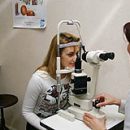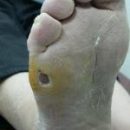Your baby has discovered phenylketonuria? Although this disease can develop in dementia, this diagnosis is not a sentence. Dangerous complication can be avoided. Learn the story of one phenylketonuria, and you will understand - how.
Content
Beginning of a new life
subordinate to the needs and requirements of Little Igorka. Justice
sake it should be said that the baby was extremely calm, and Lida
managed with him without assistance. Those unexpected turned out to be
phone call invited by Lida with baby on blood test and
Consultation to the genetics doctor. The doctor asked in detail about health
Parents of Igorka and close relatives, especially interested
The presence in both families of mentally defective children. Lida with labor
remembered the far relative who saw once in childhood,
When the grandmother rested in the village.
and then disappeared somewhere, and Lida could not understand now, what is the connection
Between that girl and her beloved Igor. From the further conversation of Lida
learned that all newborns in the hospital take blood from the heel for
early detection of hereditary disease - phenylketonuria,
Characterized by progressive dementia. Igorka test for this
The disease turned out to be positive, and he needs to repeat
survey so that in case of confirmation of the diagnosis to start
Timely treatment.
Diagnosis - Phenylketonuria
 As if the word of the doctor, the meaning of which was incomprehensible to Lida. She felt that the misfortune was bought from whom he should be saved. Lida woke up only when the doctor who has already repeated that the child needs to be offered from the chest and translate to a special diet. Prior to the final diagnosis, the doctor recommended to use artificial mixtures based on soy protein hydrolyzate - «Izomil» or «Phytalact» and invited the reception after receiving the result of re-analyzing blood. Putting all day and all night, Lida began decisive actions, postponed textbooks and medical directories, and after a few days he knew about phenylketonuria. Phenylketonuria is a hereditary disease that the child receives from healthy, but being carriers of the gene's pathology of parents.
As if the word of the doctor, the meaning of which was incomprehensible to Lida. She felt that the misfortune was bought from whom he should be saved. Lida woke up only when the doctor who has already repeated that the child needs to be offered from the chest and translate to a special diet. Prior to the final diagnosis, the doctor recommended to use artificial mixtures based on soy protein hydrolyzate - «Izomil» or «Phytalact» and invited the reception after receiving the result of re-analyzing blood. Putting all day and all night, Lida began decisive actions, postponed textbooks and medical directories, and after a few days he knew about phenylketonuria. Phenylketonuria is a hereditary disease that the child receives from healthy, but being carriers of the gene's pathology of parents.
For normal vital activity, a person requires an indispensable amino acids that enter the body with protein food. One of these amino acids - phenylalanin, who is split under the influence of the enzyme with a difficult-to-wear name. If the child was born without this enzyme, phenylalanine accumulates in its blood and its incomplete cleavage products that have toxic influence on the brain accumulates.
In the maternity hospital, a sample is carried out, revealing the presence of phenylpirogradic acid in the urine of a newborn. But this simple test may not give a positive result in the first days of life. A more accurate test is based on the determination of the level of phenylalanine in the blood. Several drops of capillary blood (from the heel) are placed on filter paper and sent to the laboratory. The level of phenylalanine in the patient can be enhanced after 4 hours after birth.
If the test results indicate the FKU, the child is immediately translated into a special low phenylalanine diet. Only in this way can be prevented by the development of deep mental inferiority and disability of the child, to ensure its normal physical and mental development.
How to live with phenylketonuria
Therefore, when the biochemistry scientists received the protein hydrolyzate, fully devoid of phenylalanine - Berfopen, a new page opened in the history of the phenylk-tonurium. And thousands of children got the opportunity to grow healthy, not lagging behind their peers with normal amino acid exchange. Currently, specialized therapeutic products are being produced that provide children in the protein power component. This is «Apolylak», «Tetrafen», «Triaphen», «Fa-Nilfrey», «Lofenalak», «Nofelan», «Lactanal», as well as low-believed or shrimp vegetable and fruit canned food, enriched with vitamins and mineral salts for dusting.
Based on the starch of cereal crops (wheat and corn), desalted products are created, which will significantly facilitate the compilation of a diet for a growing child: shywell bread, cookies, pasta, vermicellies, artificial cereals, mousses. Restrictions in the diet do not concern fats and carbohydrates. The child receives age norms of fats due to the creamy and vegetable oil, with the predominance of the share of the latter. Vegetable oil has a choleretic effect, has a laxative effect, increasing the bactericidal property of bile, and also contains polyunsaturated fatty acids that have a beneficial effect on the development of the nervous system. Sources of carbohydrates: Vegetables, fruits, sugar, crashmhotosoder-producing products - allow you to make a diet of a child with a variety of, tasty and nutritious.
The child should receive a sufficient amount of vitamins and mineral salts to create the most complete nutrition. An indispensable condition is a thorough compliance with the diet, feeding the feeding and frequent determination of the level of phenylalanine in the blood.
After 6 years, the diet gradually expands, but the control over the level of phenylalanine remains. With age, the child understands what it differs from other people, and it can consciously refuse prohibited products, although no such severe restriction is required.
To the future - with hope
With the help of medical and genetic advice, the risk of birth of a patient child can be reduced to zero. Currently, it is possible to identify pathological generators to conception and diagnosis of the disease at an early stage of pregnancy.
 For the next reception to the doctor of Lida, the fate of fate was already prepared and resistant: Phenylketonuria had a son confirmed. The doctor talked in detail about the rules of feeding, the need to control the content of phenylalanine in the blood and recommended to get acquainted with the family in which such a child is growing to not stay alone with the disease, but to be able to communicate with people who experienced such misfortune, to obtain practical advice and moral Support.
For the next reception to the doctor of Lida, the fate of fate was already prepared and resistant: Phenylketonuria had a son confirmed. The doctor talked in detail about the rules of feeding, the need to control the content of phenylalanine in the blood and recommended to get acquainted with the family in which such a child is growing to not stay alone with the disease, but to be able to communicate with people who experienced such misfortune, to obtain practical advice and moral Support.

